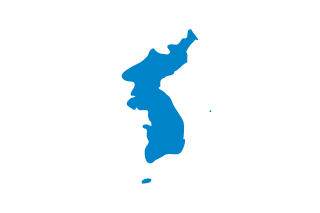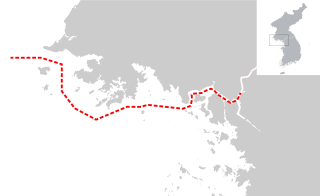 W
WFor centuries before 1945, Korea had been a unified political entity. The origins of the modern division of Korea trace to the period of Japan's colonial rule over Korea (1910-1945). During World War II, the Allied leaders fighting Japan considered the question of Korea's future after Japan's surrender in the war. The leaders reached an understanding that Korea would be liberated from Japan but would be placed under an international trusteeship until the Koreans would be deemed ready for self-rule. Beyond this rather vague agreement, much about the future of Korea was left uncertain.
 W
WFive West Sea Islands refers to the five islands in the West Sea administrated by Incheon, South Korea. They are Yeonpyeong Island, Baengnyeongdo, Daecheongdo, Socheongdo and U Island. Their positions are much closer to North Korea as these islands are originally part of Hwanghae Province and their sovereignties are claimed by North Korea, but they are since then, controlled by South Korea since the United Nations forces established the Northern Limit Line (NLL) north of the islands in 1953 following the Korean War.
 W
WThe Korean conflict is an ongoing conflict based on the division of Korea between North Korea and South Korea, both of which claim to be the sole legitimate government and state of all of Korea. During the Cold War, North Korea was backed by the Soviet Union, China, and its communist allies, while South Korea was backed by the United States and its Western allies. The division of Korea by external powers occurred after World War II had ended, starting in 1945, with the official division in 1948, tensions erupted into the Korean War, which lasted from 1950 to 1953. When the war ended, both countries were devastated, with utter destruction of much of the countries, but the division remained. North and South Korea continued a military standoff, with periodic clashes. The conflict survived the end of the Cold War and continues to this day.
 W
WKorean reunification refers to the potential reunification of North Korea and South Korea into a single Korean sovereign state. The process towards reunification was started by the June 15th North–South Joint Declaration in June 2000, and was reaffirmed by the Panmunjom Declaration for Peace, Prosperity and Unification of the Korean Peninsula in April 2018, and the joint statement of the United States President Donald Trump and North Korean Chairman Kim Jong-un at the Singapore Summit in June 2018. In the Panmunjom Declaration, the two countries agreed to work towards a peaceful reunification of Korea in the future.
 W
WThe Liancourt Rocks are a group of small islets in the Sea of Japan. While South Korea controls the islets, its sovereignty over them is contested by Japan.
 W
WThe Liancourt Rocks dispute is a territorial dispute between South Korea and Japan. Both countries claim sovereignty over the Liancourt Rocks, a group of small islets in the Sea of Japan which are referred to as "Dokdo" in Korean and "Takeshima" (竹島) in Japanese. North Korea also claims sovereignty of the islands.
 W
WThe Northern Limit Line or North Limit Line (NLL) – 북방한계선 – is a disputed maritime demarcation line in the Yellow (West) Sea between the Democratic People's Republic of Korea (DPRK) on the north, and the Republic of Korea (ROK) on the south. This line of military control acts as the de facto maritime boundary between North and South Korea.
 W
WSocotra Rock is a submerged rock 4.6 metres (15 ft) below sea level located in the Yellow Sea. International maritime law stipulates that a submerged rock outside of a nation's territorial sea can not be claimed as territory by any nation. However, the rock is the subject of a maritime dispute between South Korea and China, which consider it to lie within their respective exclusive economic zones.
 W
WThe Syngman Rhee Line refers to a marine boundary line established by South Korean President Syngman Rhee in his "Peace Line" declaration of January 18, 1952, establishing a wide area of maritime sovereignty, beyond internationally accepted territorial waters, around the entire Korean Peninsula. This included placing the Liancourt Rocks (Dokdo/Takeshima) in South Korean territory.